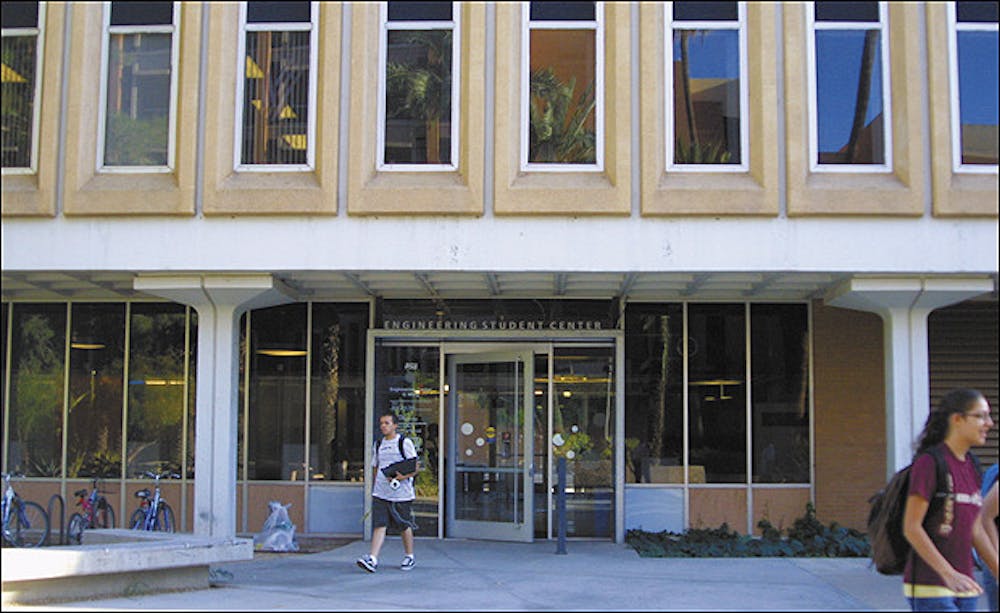A decrease in students graduating with engineering degrees is causing an employment crisis in the industry despite high starting salaries in the field, officials said.
The number of engineering graduates at ASU must grow in coming years in order to replace the number of engineers close to retirement, said Robin Hammond, director of career services at the Ira A. Fulton Schools of Engineering.
“Companies [that recruit ASU engineering students] have said that there is an employment crisis,” Hammond said. “They are looking for more engineers than may even be available across the nation.”
ASU’s engineering school is looking to increase the number of domestic students by offering K-12 outreach programs, partnerships and summer programs for potential students to encourage an interest in science, engineering, technology and math, Hammond said.
Retention programs are also provided for undergraduates, such as E2 Camp, which helps freshmen form a strong foundation in engineering, Hammond said.
According to a report from the National Association of Colleges and Employers (NACE) released in July, engineering jobs account for 12 of the top 15 highest starting salaries in the U.S., which range from $54,158 to $83,121.
The study found there are far fewer people graduating with math-based majors compared to the graduation rate of liberal arts majors.
From the total number of college graduates across the nation this year, only 4 percent graduated with engineering and computer science degrees, a decrease from about 8 percent in the early 1990s.
Social science and history students each comprise 16 percent of U.S. college graduates, according to the study.
Edwin Koc, director of strategic and foundation research at NACE, said the U.S. is not generating enough engineers to meet the demand, forcing national engineering companies to look elsewhere for workers.
“A lot of employers are applying for H1B visas to allow students from outside the United States to come work for them,” Koc said, referring to specialty work visas.
In the long term, many engineering companies will face greater demand and will need a higher number of graduates to fill the gap, he said.
However, one problem engineering companies are running into is that the law limits the amount of international applicants who can occupy these places, Koc said. Current law limits the maximum number of specialty work visas to 65,000 per year.
Koc said these limitations make it difficult for American manufacturers to stay competitive because they lack engineers. The number of visas given to international students “to fill the open slots” is not enough, he said.
Joe Kullman, spokesman for the engineering school, said the engineering school has an estimated 4,250 undergraduate engineering students and 2,000 graduate engineering students this academic school year.
Of all engineering undergraduates, 6 percent are international students, while 60 percent of graduate students are international, up almost 8 percent from last year, Kullman said.
Nationally, graduate engineering schools have an average of one in three international students, according to NACE.
Engineering professor Terry Alford said he has seen both an increase of international graduate students and a reduction of domestic graduate students.
“We are doing ourselves an unfortunate injustice,” Alford said about the shortage of domestic students in the graduate program. “If you look at the whole picture at the graduate level, we are not producing a sufficient number of domestic engineers.”
Though he used to see a trend of international Ph.D. students going back to their native countries, Alford said the shortage of engineers in the U.S. has caused more international students to decide to stay here to work.
“I hope that as a country we will encourage people to go into engineering and also encourage them to obtain advanced degrees so that we can maintain a certain level of creativity and innovativeness,” he said.
Increasing the number of domestic engineering students at the doctoral level is crucial if the U.S. wants to stay competitive in the industry, Alford said.
“We need that competitive edge,” he said.
Reach the reporter at griselda.nevarez@asu.edu.




